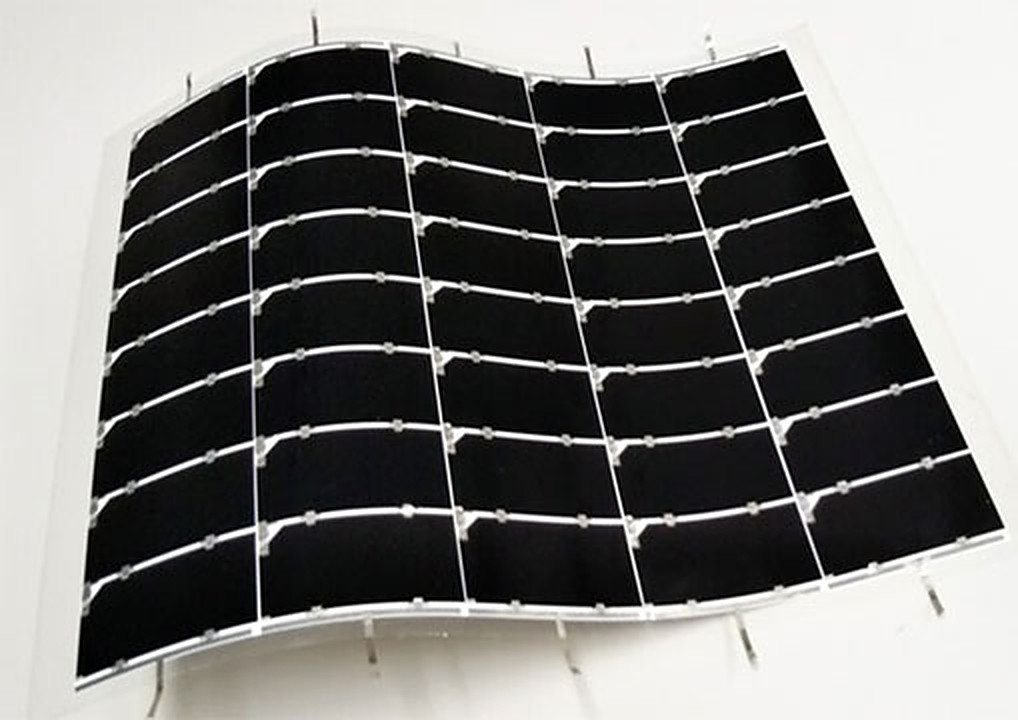From pv magazine Global
Sharp Corporation has achieved a conversion efficiency of 32.65% in a lightweight, flexible, practically sized solar module developed as part of the “Research and Development of Solar Cells for Use in Vehicles” project, which is administered by Japan’s New Energy and Industrial Technology Development Organization (NEDO).
The module’s conversion efficiency — currently the world’s highest, according to the company — bests that of a similar Sharp module developed under another NEDO project in 2016, which achieved an efficiency of 31.17%, at the time a world record.
The new prototype uses a triple-junction compound design that sandwiches the solar cell between layers of film. The module is expected to be used in a variety of vehicles, an application that demands high efficiency and lightweight construction. Modules measuring about 29 by 34 centimeters (for an area of 965 square centimeters), a size which is large enough to be commercially viable, weigh only about 56 grams (0.58 kilograms per square meter).
Sharp’s triple-junction compound solar cell adopts a proprietary structure that comprises three photo-absorption layers with indium gallium arsenide as the bottom layer so that sunlight can be efficiently converted into electricity. Smaller cells using this structure (with an area of 1.047 square centimeters) achieved a conversion efficiency of 37.9% in April 2013. In 2016, Sharp used practically sized cells (with an area of 27.86 square centimeters) to create a composite module (with an area of 968 square centimeters) to achieve a conversion efficiency of 31.17%, at the time the world’s highest.
In this current project, Sharp increased the average conversion efficiency of its triple-junction compound solar cells (with an area of 22.88 square centimeters) from the 2016 modules (from about 34.5% to about 36%) and improved the cell fill factor on each module to improve the conversion efficiency for a practically sized module (with an area of 965 square centimeters) to 32.65%.
Sharp said it would continue to conduct R&D into more efficient, lower-cost solar modules with a view to their use in such applications as electric vehicles (EVs) and aerospace.
Solar cells for EVs that provide direct electricity promise to make electric cars more convenient for users due to lower fuel costs and less time required for charging.
“Against this backdrop, Sharp has been developing high-efficiency, low-cost solar modules that can conform to the curved surfaces of vehicles for use in a broad range of vehicles, including in standard EV and aerospace applications, by 2050,” the company added.
This content is protected by copyright and may not be reused. If you want to cooperate with us and would like to reuse some of our content, please contact: editors@pv-magazine.com.








By submitting this form you agree to pv magazine using your data for the purposes of publishing your comment.
Your personal data will only be disclosed or otherwise transmitted to third parties for the purposes of spam filtering or if this is necessary for technical maintenance of the website. Any other transfer to third parties will not take place unless this is justified on the basis of applicable data protection regulations or if pv magazine is legally obliged to do so.
You may revoke this consent at any time with effect for the future, in which case your personal data will be deleted immediately. Otherwise, your data will be deleted if pv magazine has processed your request or the purpose of data storage is fulfilled.
Further information on data privacy can be found in our Data Protection Policy.